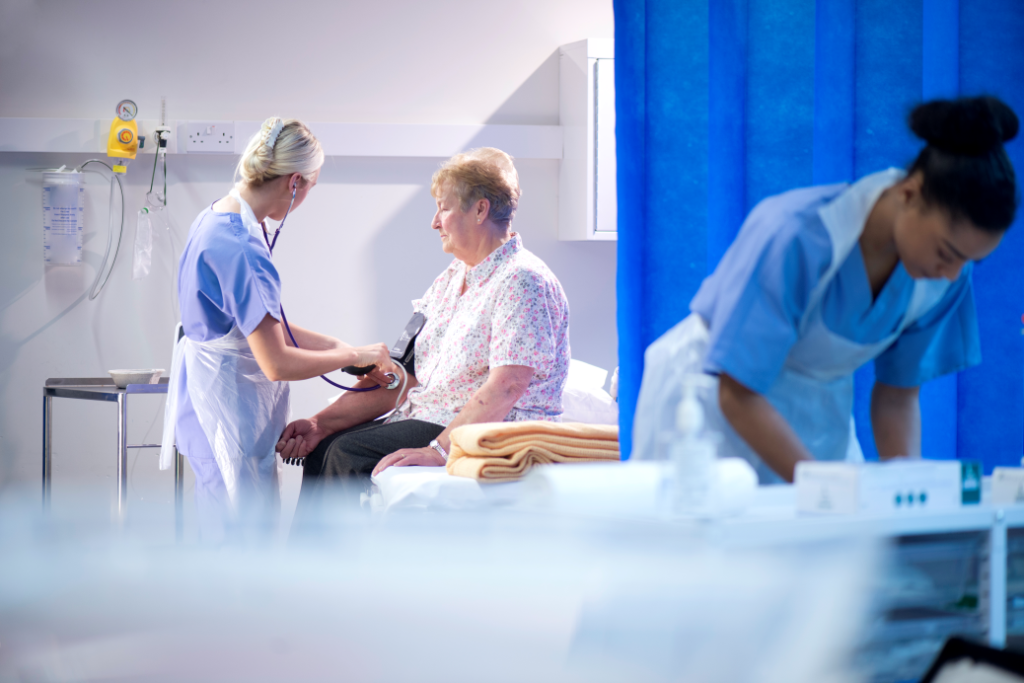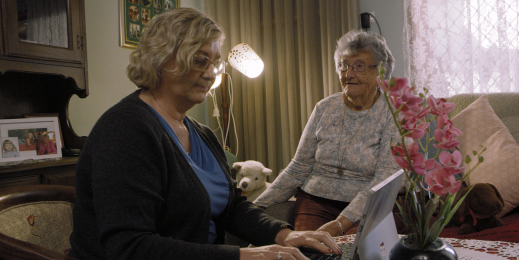
Just what the doctor ordered: Cloud solution improves clinical outcomes and operational performance for Gippsland Health Alliance
Gippsland Health Alliance (GHA) comprises 11 hospitals and six bush nursing centres across 50 sites in the Gippsland region of Victoria, which covers 41,500 square kilometres and is home to around 300,000 people. GHA was established in 1998 as part of the Victorian Government’s Rural Health Alliance strategy.
The organisation’s main objective is to enhance patient care and better use resources by providing timely information to health professionals and administrators, wherever they are located. Central to achieving this objective is its electronic medical record (EMR) system, which houses digital versions of key patient information.
GHA wanted to improve the accessibility of its existing EMR system for clinicians so they could make more informed decisions. It also wanted to reduce the system’s risk of being affected by cyberattacks, increase its resilience and achieve significant cost benefits.

Following a rigorous tender process, GHA chose Altera Digital Health – a Microsoft partner – in 2017 to deploy its Sunrise EMR clinical suite, a cloud-based solution built in Microsoft Azure.
Adrian Shearer, Chief Technology Officer and Interim Chief Information Officer at GHA, says the option of a fully managed service was one of the key reasons why the alliance selected Altera Digital Health and its Sunrise solution on Azure.
“We were looking for an organisation that could deliver all of the infrastructure, design and security as part of the solution,” he says.
Healthy growth
Thanks to the flexibility of the cloud-based EMR system, GHA has been able to scale up the solution as needed.
The solution was originally deployed to accommodate approximately 300 registered users, but the alliance has since expanded its accessibility to around 800 users. GHA can also respond quickly and efficiently to the need for external clinicians and physicians by adding them as temporary users.
“The incremental uplift as we go has been seamless,” says Shearer. “So from 300 concurrent users to 800, there’s been no impact on my team operationally to deliver that. They’ve just turned up the heat and expanded.”
The first site in the alliance to deploy the Altera Digital Health Sunrise EMR clinical suite was Latrobe Regional Hospital (LRH), a purpose-built teaching hospital with more than 2,100 staff members who provide care to a population of more than 260,000 people.
The EMR solution was implemented in LRH’s 30-bed emergency department in April 2019. Today, it is being used by all of the hospital’s inpatient services and community mental health services across the Gippsland region.
GHA has implemented Altera Digital Healths’ Sunrise Emergency Care solution, which is part of its EMR platform, at the emergency departments of Central Gippsland Health Service, Bairnsdale Regional Health Service, West Gippsland Healthcare Group and Bass Coast Health. The EMR platform is expected to be rolled out across the inpatient services at all four hospitals by November 2022.
Shearer says the EMR solution has improved GHA’s ability to recruit health information managers.
“We no longer require people with that skillset to come and live here and look at paper records,” he explains.
Now we can have a health information manager or a health coder work from pretty much anywhere. They don’t have to necessarily be on the floor at LRH to do that job.
Enhancing patient visibility
GHA’s cloud-based EMR system provides users with a complete view of all patient episodes across the Gippsland region from wherever they are located. This has significantly improved clinical outcomes in a number of ways, according to Shearer.

“We’ve reduced our workload of having to recall and move records around the hospitals,” he says.
“We’ve seen around 50 per cent less medication errors, and [the EMR system] has also fostered antimicrobial stewardship by helping us more accurately diagnose pathology orders in terms of what’s being ordered by whom and when. We can then focus on educating clinicians about the types of orders that are being placed and if they’re appropriate. Not over-ordering antibiotics is very important in hospital environments.”
Shearer says the EMR solution also enables GHA to audit its operational processes more accurately and identify any missing information in patient episodes. This has the added benefit of helping educate doctors and nurses in how to document these episodes.
For Simone Redpath, General Manager of Critical Services at LHR, the EMR system helps her determine whether patient transfers are required.
“I have been able to look at information on the EMR while on the phone with my colleagues at other local hospitals to discuss whether a patient required a transfer or could be cared for closer to home,” she explains.
“Without the quality of information shared via the EMR, the patient may have been transferred away from their family, friends and community unnecessarily.”
Rebecca Wittmer, who is the Critical Care Nurse Unit Manager at LHR, says the EMR solution assists her team in working out which patient referrals to prioritise.
“For example, we received a referral of a patient with high-level needs from our very busy Emergency Department to the Critical Care Unit (CCU), which had limited bed capacity,” she says. “Our CCU team was able to review the patient’s notes on the EMR and, with the help of our intensivist, begin planning for treatment while we progressed efforts to secure them a bed. As a result, the patient was prioritised for admission.
Without immediate access to this information on the EMR, our team would not have been able to fully review the complexities of the case and treatment may have been delayed.
Keeping costs down
As well as enjoying improved clinical outcomes and scalability, GHA has been able to avoid purchase, installation and maintenance costs associated with traditional IT infrastructure.
“One of the current challenges for us due to the COVID-19 pandemic is there would be a significant risk right now with the provisioning of physical hardware,” Shearer says.
“That’s not a concern for us with the Azure environment and our hosting with Altera Digital Health as part of this project. If we were doing this by ourselves, we would have had an impact on resources trying to put this equipment in.”
And, if any of the hardware used to help power GHA’s system needs upgrading, there is no additional cost to make it cloud-compatible.
Safe and secure
By moving its EMR system to the cloud and hosting it on a secure network, GHA has been able to take advantage of several security and business continuity benefits.
These include Azure’s built-in firewalls, which are designed to reduce downtime for the EMR system and prevent extensive damage to it by detecting potential threats.
System performance is constantly monitored using another built-in service, which generates alerts that the support team at Altera Digital Health and Microsoft Azure can respond to.
In the event of its primary EMR system going offline, GHA can have a backup system ready to go in a matter of hours. And, by using backup and disaster recovery sites located in Australia rather than overseas, the alliance can also achieve data sovereignty.

The resilience of GHA’s cloud-based EMR platform was put to the test in 2019 when it was subject to a sophisticated cyberattack that prevented access to a number of critical systems, including its financial management system.
Although the alliance was forced to quarantine some of its systems following the attack, there was no evidence of unauthorised access to patient data.
“While we had to disable connectivity to our EMR due to security reasons, it was ready the day we said we were ready to come back online,” Shearer explains. “And that was purely based on the fact that it was hosted in Azure and protected by the Azure infrastructure.
“As soon as we were given the green light, the servers to the EMR were turned back on, and it was genuinely the first application that was ready for us to start.”
GHA has also boosted its risk resilience by rolling out a scanning and document management capability, embedded within the Sunrise EMR system. This enables hospitals to digitise old and new paper records from other connected health sites and ancillary services.
According to Shearer, Sunrise Document Manager addresses the inevitable need for the ongoing management of paper records in an EMR system. “It achieves this in a risk-resilient, seamless and sustainable way,” he adds.
Dr Nic Woods, Chief Medical Officer at Microsoft Australia, says:
It’s really exciting to see the speed, flexibility, resiliency and security that the Microsoft Azure cloud can offer in supporting the implementation of these critical clinical systems across the Gippsland Health Alliance.
“Many health services are moving to these types of deployment models so they can focus on getting more value out of the solution, rather than having to worry about all aspects of security that are baked into cloud services.”








